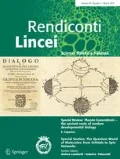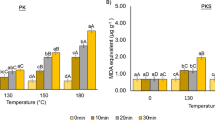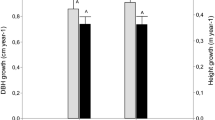Abstract
Stone pine nuts, the most expensive dry fruit worldwide, have been characterized mostly for the main producer countries, located in the Northern Hemisphere. A proximate composition analysis of pine nuts harvested from seven areas located in the Southern Hemisphere (Argentina, Australia, Chile and New Zealand) was performed. Pine nuts showed significant differences in dietary fiber and minerals, probably due to the different climate and environmental conditions, confirming the species’ plasticity and adaptability. Australian pine nuts showed a different profile, with the highest values for protein, lipids and ashes, and the lowest for dietary fiber. Studied pine nuts showed values comparable to the ones reported for the species in its native habitat. Results confirmed that high-quality Mediterranean pine nuts might be produced in the areas included in this study, with practical implications for stone pine cropping in non-native habitats and for the later marketing of pine nuts.
Graphic abstract




Similar content being viewed by others
Data availability
The datasets generated and analyzed during the current study are not publicly available due to institutional guideline, but are available from the corresponding author on reasonable request.
References
Adhikari K, Minasny B, Greve MB, Greve MH (2014) Constructing a soil class map of Denmark based on the FAO legend using digital techniques. Geoderma 214–215:101–113. https://doi.org/10.1016/J.GEODERMA.2013.09.023
Alasalvar C, Bolling B (2015) Review of nut phytochemicals, fat-soluble bioactives, antioxidant components and health effects. Br J Nutr 113:S68–S78. https://doi.org/10.1017/S0007114514003729
Albers C (2012) Coberturas SIG para la enseñanza de la Geografía en Chile. In: Universidad de La Frontera, Temuco, Chile
AOAC (2012) Official Methods of Analysis of AOAC INTERNATIONAL. In: Latimer G (ed) 19th ed.; AOAC International: Washington DC, USA
Bitok E, Rajaram S, Jaceldo-Siegl K, Oda K, Sala-Vila A, Serra-Mir M, Ros E, Sabaté J (2018) Effects of long-term walnut supplementation on body weight in free-living elderly: results of a randomized controlled trial. Nutrients 10:1317. https://doi.org/10.3390/nu10091317
Bolling B, McKay D, Blumberg J (2010) The phytochemical composition and antioxidant actions of tree nuts. Asia Pac J Clin Nutr 19:117–123
Bolling B, Chen O, McKay D, Blumberg J (2011) Tree nut phytochemicals: composition, antioxidant capacity, bioactivity, impact factors: a systematic review of almonds, Brazils, cashews, hazelnuts, macadamias, pecans, pine nuts, pistachios and walnuts. Nutr Res Rev 24:244–275. https://doi.org/10.1017/S095442241100014X
Carbone M, Piccolo M (2002) Humans and physical characteristics of the Claromecó River Basin. Argentina Papeles Geogr 35:27–36
Di Rienzo J, Casanoves F, Balzarini M, Gonzalez L, Tablada M, Robledo C (2020) InfoStat version 2020. http://www.infostat.com.ar. Accessed 10 May 2020
Esche R, Müller L, Engel K (2013) Online LC-GC-based analysis of minor lipids in various tree nuts and peanuts. J Agric Food Chem 61:11636–11644. https://doi.org/10.1021/jf403900q
Estruch R, Ros E, Salas-Salvadó J, Covas M, Corella D, Arós F, Gómez-Garcia E, Ruiz-Gutiérrez V, Fiol M, Laperta J et al (2018) Primary prevention of cardiovascular disease with a Mediterranean diet supplemented with extra-virgin olive oil or nuts. N Engl J Med 378(34):1–14. https://doi.org/10.1056/NEJMoa1800389
Evaristo I, Batista D, Correia I, Correia P, Costa R (2013) Chemical profiling of Portuguese Pinus pinea L. nuts and comparative analysis with Pinus koraiensis Sieb. & Zucc. commercial kernels. Opt. Méditerranéennes 105:99
Fredes N, Martínez P, Bernava V, Osterrieth M (2009) Micro artrópodos como indicadores de disturbio antrópico en entisoles del área recreativa de Miramar. Argentina Cienc del Suelo 27:89–101
Gómez-Ariza J, Arias-Borrego A, García-Barrera T (2006) Multielemental fractionation in pine nuts (Pinus pinea) from different geographic origins by size-exclusion chromatography with UV and inductively coupled plasma mass spectrometry detection. J Chromatogr A 1121:191–199
Holman G (2020) Pine nut production in Australia. Australian Nut Industry Council. https://nutindustry.org.au/LiteratureRetrieve.aspx?ID=168689. Accessed 10 May 2020
INC (International Nut and Dried Council) (2020) Statistical review: pine nuts. Nutfruit 79(1):82
Kadri N, Khettal B, Aid Y, Kherfellah S, Sobhi W, Barragan-Montero V (2015) Some physicochemical characteristics of pinus (Pinus halepensis Mill., Pinus pinea L., Pinus pinaster and Pinus canariensis) seeds from North Algeria, their lipid profile and volatile contents. Food Chem 188:184–192. https://doi.org/10.1016/j.foodchem.2015.04.138
Kilci M (2013) Effects of nutrients on cone losses of stone pine (Pinus pinea L.) in Kozak Basin. Opt. Mediterranénnes Sér. A Mediterr Semin 105:21–28
Loewe V, Delard C (2012) Un Nuevo cultivo para Chile, el pino piñonero (Pinus pinea L.). In: Loewe VM, Delard CR (eds) INFOR: Santiago, Chile, p 364
Loewe V, Balzarini M, Álvarez A, Delard C, Navarro-Cerrillo R (2016) Fruit productivity of Stone pine (Pinus pinea L.) along a climatic gradient in Chile. Agric For Meteorol 223:203–216
Loewe V, Alvarez A, Balzarini M, Delard C, Navarro-Cerrillo R (2017a) Mineral fertilization and irrigation effects on fruiting and growth in stone pine (Pinus pinea L.) crop. Fruits 72:281–287. https://doi.org/10.17660/th2017/72.5.3
Loewe V, Navarro-Cerrillo R, García-Olmo J, Riccioli C, Sánchez-Cuesta R (2017b) Discriminant analysis of Mediterranean pine nuts (Pinus pinea L.) from Chilean plantations by near infrared spectroscopy (NIRS). Food Control 73:634–643
Loewe V, Álvarez A, Navarro-Cerrillo R (2018) Morphometric and chemical fruit variability of selected stone pine trees (Pinus pinea L.) grown in non-native environments. Plant Biosyst 152:547–555. https://doi.org/10.1080/11263504.2018.1435587
Loewe V, Del Río R, Balzarini M (2020a) Stone pine (Pinus pinea) growth and cone yield as a function of planting density in Chile. Bosque 41(3):381–386. https://doi.org/10.4067/S0717-92002020000300381
Loewe V, Delard C, Del Río R, Balzarini M (2020b) Long-term effect of fertilization on stone pine growth and cone production. Ann For Sci 77:69. https://doi.org/10.1007/s13595-020-00978-6
Loewe-Muñoz V, Balzarini M, Delard C, del Rio R, Álvarez A (2019) Potential of southern Latin-American coastal areas for stone pine (Pinus pinea L.) cropping. Rend Fis Acc Lincei 30(2):379–387. https://doi.org/10.1007/s12210-019-00801-z
López-Mata L (2001) Proteins, amino acids and fatty acids composition of nuts from the Mexican endemic rarity, Pinus maximartinezii, and its conservation implications. Interciencia 26:606–610
Lutz M, Álvarez K, Loewe V (2017b) Chemical composition of pine nut (Pinus pinea L.) grown in three geographical macrozones in Chile. CyTA J Food 15:284–290. https://doi.org/10.1080/19476337.2016.1250109
Lutz M, Loewe V, Zuleta A (2017a) Comparative study of the chemical composition of pine nuts grown in six countries. In: Proceedings of the IUNS 21st International Congress of Nutrition (ICN), Buenos Aires, Argentina
Malchi T, Shenker M (2011) Iron deficiency of Pinus pinea: Evaluation of iron uptake mechanisms and comparison of different genetic lines; Jerusalem, Israel, p 42
Nergiz C, Dönmez I (2004) Chemical composition and nutritive value of Pinus pinea L. seeds. Food Chem 86:365–368. https://doi.org/10.1016/j.foodchem.2003.09.009
Ottone JR (1989) Posibilidades de Pinus pinea L. (Pino piñonero) en la producción de piñones para la industria alimenticia. In: Proceedings of the V Jornadas Técnicas: Uso múltiple del bosque y sistemas agroforestales; Instituto Forestal Nacional, Ed.; Eldorado ediciones: Misiones, Argentina, pp 54–56
Ros E, Mataix J (2006) Fatty acid composition of nuts—implications for cardiovascular health. Br J Nutr 96:S29–S35. https://doi.org/10.1017/BJN20061861
Ruggeri S, Cappelloni M, Gambelli L, Nicoli S, Carnevale E (1998) Chemical composition and nutritive value of nuts grown in Italy. Ital J Food Sci 10:243–252
Sabaté J, Wien M (2010) Nuts, blood lipids and cardiovascular disease. Asia Pac J Clin Nutr 19:131–136. https://doi.org/10.6133/apjcn.2010.19.1.18
Salgin U, Salgin S (2013) Effect of main process parameters on extraction of pine kernel lipid using supercritical Green solvents: solubility models and lipid profiles. J Supercrit Fluids 73:18–27. https://doi.org/10.1016/j.supflu.2012.11.002
Schröder K, Khaldi A, Hasnaoui A (2014) Analyse de la chaîne de valeur “Pignons de pin” en Tunisie, p 48
Sen F, Ozer K, Aksoy U (2016) Physical and Dietary Properties of In-shell Pine Nuts (Pinus pinea L.) and Kernels. Am J Exp Agric 10:1–9. https://doi.org/10.9734/AJEA/2016/22464
Spencer R (1995) Horticultural flora of southeastern Australia. Volume 1, ferns, conifers & their allies: the identification of garden and cultivated plants; University of N.S.W. Press: Sydney, Australia
Sülüsoglu M (2004) The Management of villagers owned Stone Pine (Pinus pinea L.). In: Plantations in Kozak Region, Turkey, a case study; FAO Working Paper; Rome, Italy
Trap L (1993) Pinus pinea, an update for Australia. In: Yearbook West Australian Nut and Tree Crops Association n°17; WANATCA: Subiaco, W.A., pp 6–8
Trap L (1996) Pinus pinea: An edible nut pine of many uses. Aust New Crop Newsl 1996:3
Van Soest P, Robertson J, Lewis B (1991) Methods for dietary fiber, neutral detergent fiber, and non-starch polysaccharides in relation to animal nutrition. J Dairy Sci 74:3583–3597. https://doi.org/10.3168/JDS.S0022-0302(91)78551-2
Vanhanen L, Savage G (2013) Mineral analysis of Pine nuts (Pinus spp.) grown in New Zealand. Foods 2:143–150. https://doi.org/10.3390/foods2020143
Vanhanen L, Savage G, Hider R (2017) Fatty acid profile of New Zealand grown edible pine nuts (Pinus spp.). Food Nutr Sci 8:305–315
Venkatachalam M, Sathe SK (2006) Chemical composition of selected edible nut seeds. J Agric Food Chem 54:4705–4714. https://doi.org/10.1021/jf0606959
Wine-Marlborough (2014) New Zealand, 15 p
Zuleta A, Weisstaub A, Giacomino S, Dyner L, Loewe V, Del Río R, Lutz M (2018) An ancient crop revisited: chemical composition of Mediterranean pine nuts grown in six countries. Ital J Food Sci 30:170–183. https://doi.org/10.14674/IJFS-996
Acknowledgements
Authors thank Rod McDougall for providing Walker stone pine seeds, and Pinoli Ltd. for sharing chemical composition analyses of New Zealand grown pine nuts.
Funding
This work was supported by Fondo de Fomento al Desarrollo Científico y Tecnológico (Grant no. D11I1134). Program “Development and contributions for the use of high-value forest and fruit-forest species for Chile”, supported by the Chilean Ministry of Agriculture, funded statistical analyses.
Author information
Authors and Affiliations
Corresponding author
Ethics declarations
Conflict of interest
The authors declare that they have no conflict of interest.
Additional information
Publisher's Note
Springer Nature remains neutral with regard to jurisdictional claims in published maps and institutional affiliations.
Rights and permissions
About this article
Cite this article
Loewe-Muñoz, V., Noel, D. Mediterranean Pinus pinea L. nuts from Southern Hemisphere provenances. Rend. Fis. Acc. Lincei 32, 181–189 (2021). https://doi.org/10.1007/s12210-021-00980-8
Received:
Accepted:
Published:
Issue Date:
DOI: https://doi.org/10.1007/s12210-021-00980-8




